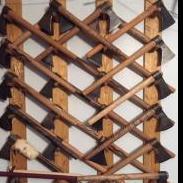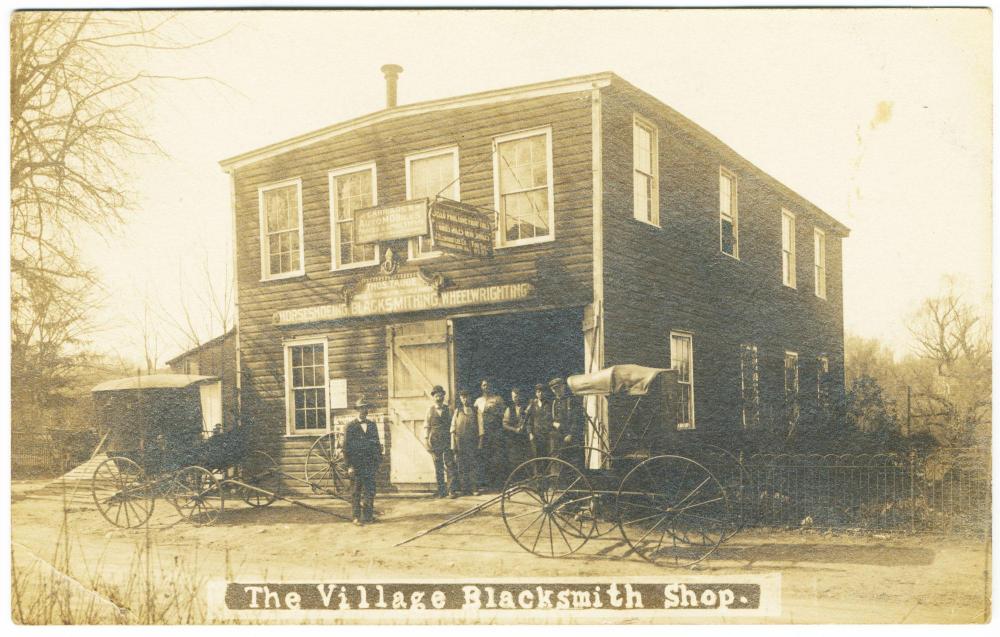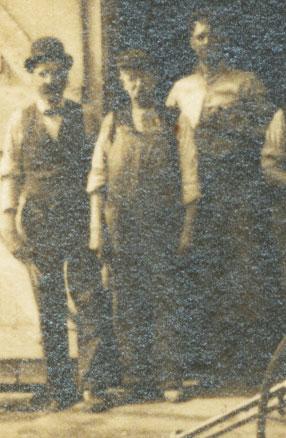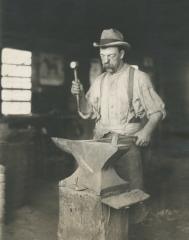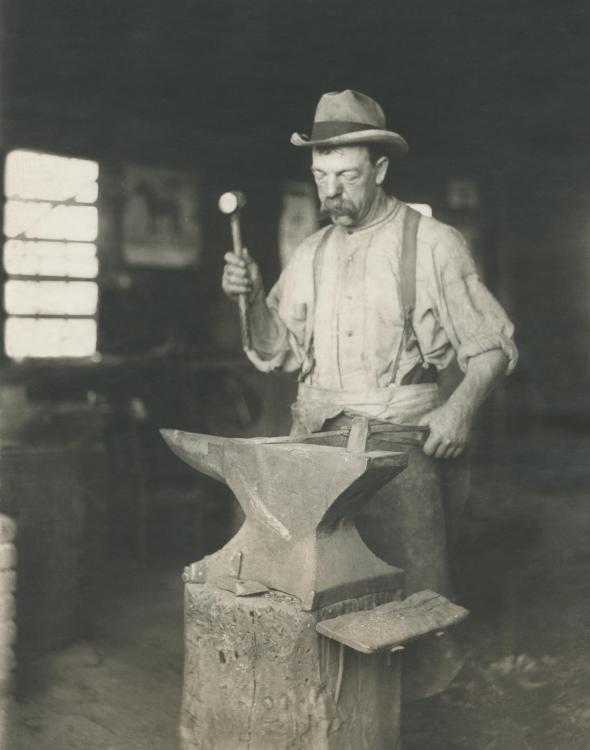-
Posts
10 -
Joined
-
Last visited
Profile Information
-
Gender
Not Telling
-
Location
Radnor, Pennsylvania, USA
-
Interests
Local history
Recent Profile Visitors
2,184 profile views
-
This one was not necessarily inflatable, but they were offering it as a superior alternative, so they already existed. See HERE.
-
Thanks for all comments. So as a follow up for those who have helpfully commented on Chris Downs's attire I'm attaching a photo (postcard) of another blacksmith shop, a mile down the road in Ithan, just to show the fashions a few years later. On close inspection it looks to me like our Chris Downs moved to this shop and here he is again some years later, after the advent of motor vehicles, pictured center in the blow-up. If it's him, he's definitely a shorty, as someone observed here earlier, and still sporting that wonderful 'Village People' stylie mustache! To the left is this shop's owner, Thomas Tague (who is also pictured as a local volunteer firefighter in our archives), whose son took over Chris Downs's Radnor shop. This photo can be dated as post-1911 from the 'Jelco Puncture Proof Tires' sign. Unlike the previous, I'm not looking for comments on this photo; it's just here for fun. (We're allowed fun here, right?)
-
ThomasPowers: Excellent point. He was only 22 when he arrived, and though he may have started his career at a very early age to my mind he would only bring an anvil if he'd inherited one, surely? We may never know.
-
MrTMichaud (or anyone!): Why no tools on that small shelf? Would a smith's set-up be so perfect that there's no vibration to bounce tools onto the floor, (or have they already dropped?!) Or, since it's just a posed set-up, was a clean shelf simply more to the photographer's liking? And might we have a hunch as to a manufacturer of the anvil? Is there any significance, or clues, from the missing chunk from our nearside of the plate? Just want to be sure we've covered all the possibilities before I stop bothering y'all and move on.
-
Frosty: Thanks. Exactly the comments I need. And have no fear. I have about 60 secs max. to talk about each of three dozen photos typical of late 19th century life here in rural Radnor. I don't want to be completely ignorant of this man's trade; nor am I his apprentice, but I hope to be able to convey a small something evocative of a bygone era which will inform and entertain. I think the question uppermost in an audience's minds may be, "What was he making?" - so my comment will be that pretty much everything these guys made started out as a metal blank. This could have become a handle for a tool, perhaps a small horseshoe, a small part for a carriage, etc. - the idea being that I can give people examples of the potential behind a thin strip of non-specific metal. I deliberatlely speculated out loud above in order to provoke a response that would give me more truth, so thank you for that. Incidentally, I've found another photograph which "probably" contains the same guy about 20 years later where he looks to be the oldest man on the job just a mile down the road. It shows that he was relatively short among his peers, so your observations about mis-matched working height could be fair. When you worked in a team back in those days I doubt you got to lower the anvil when it was your turn to play. However, it's not something I'm pursuing, so that speculation won't become public. Your craft is one that definitely appeals to me, but the closest I ever got to working with metal was making leaded light windows as a hobby many years ago, and I'm glad to see that the houses where I installed them now boast the windows (quite wrongly of course) as a period feature. Perhaps one day they'll appear on a forum such as this, where people will be speculating who came up with my one-of-a-kind designs! Chris Downs had a long and happy life. He came across the ocean as a widower with two daughters to start a new life with the special skills he probably already possessed. I just wish I had the names of some of the characters in our other photos.
-
Thanks for the advice. "London Pattern" it is. I've just discovered him in the 1900 census, which reports that he came from Ireland in 1888 with his family - supposedly the same year as the photo. Might he have brought his anvil and tools with him, or is that a totally daft supposition?
-
I'd considered this Pnut. It would certainly have been staged or the arm would be blurry, especially without a lot of light. This reproduction is from a glass plate incidentally. I also agree the base may have been wood; so many carvings apparent. Thanks also to Kozzy - some excellent observations. Please keep them coming!
-
Yes, thanks, but the site owner sadly has no more specific location details. But what about the anvil, tools, shop, etc? Any info. at all would be wonderful. All I can say at the moment (from my ignorant standpoint) is: "Pictured here “spreading” or “forging” the end of a cut piece of iron to make a standard iron horseshoe on a traditional “English pattern” anvil, also known as “London style”, approx. 200 lbs in weight. Forged wrought iron - the best kind. Stand made from a solid piece of rock. Hardie hole (square) with hardie cutoff in slot. Pritchel hole (round). Heel (square end). Horn. Tongs, which he probably made himself. Blacksmithing sledgehammer (long handle and heavy head). Another hardie cutoff (for cutting metal) resting on stone at front. Chisels and/or gouges /punches at left side. Square porter holes in the waist are used for carrying the anvil during manufacture and are typical of older anvils. Edge of forge can just be seen on the left made out of fire bricks. Some kind of chart depicting a horse on the wall. Blacksmiths could be both farriers (horse paraphernalia) and wheelwrights. Clothing: improvised farrier chaps over several layers of clothing. The phrase, “Beat the daylight out of it” came from shaping metal either around a cone mandrel or the anvil horn." Any/all corrections/additions welcome. Many thanks all.
-
-
Fearless changed their profile photo
-
I'm giving a talk later in the year about a range of local photos which have been chosen for me, and this is the only one related to blacksmithing. I only know what I've read in the last two days online, but basically all I can say now is that this is possibly about 200lb or thereabouts, and he was just starting to make an iron horseshoe. Can anyone identify the anvil or tell me anything else about what you may see in the photo, ie tools, clothing, shop... anything? The date is c.1888 and the blacksmith is somewhere in Radnor, PA (USA). His name is Chris Downs, but he doesn't seem to appear in any available census or local directory. It also looks like there is the edge of a brick forge on the extreme left of the photo. Need some expert help, so thanks in anticipation!


